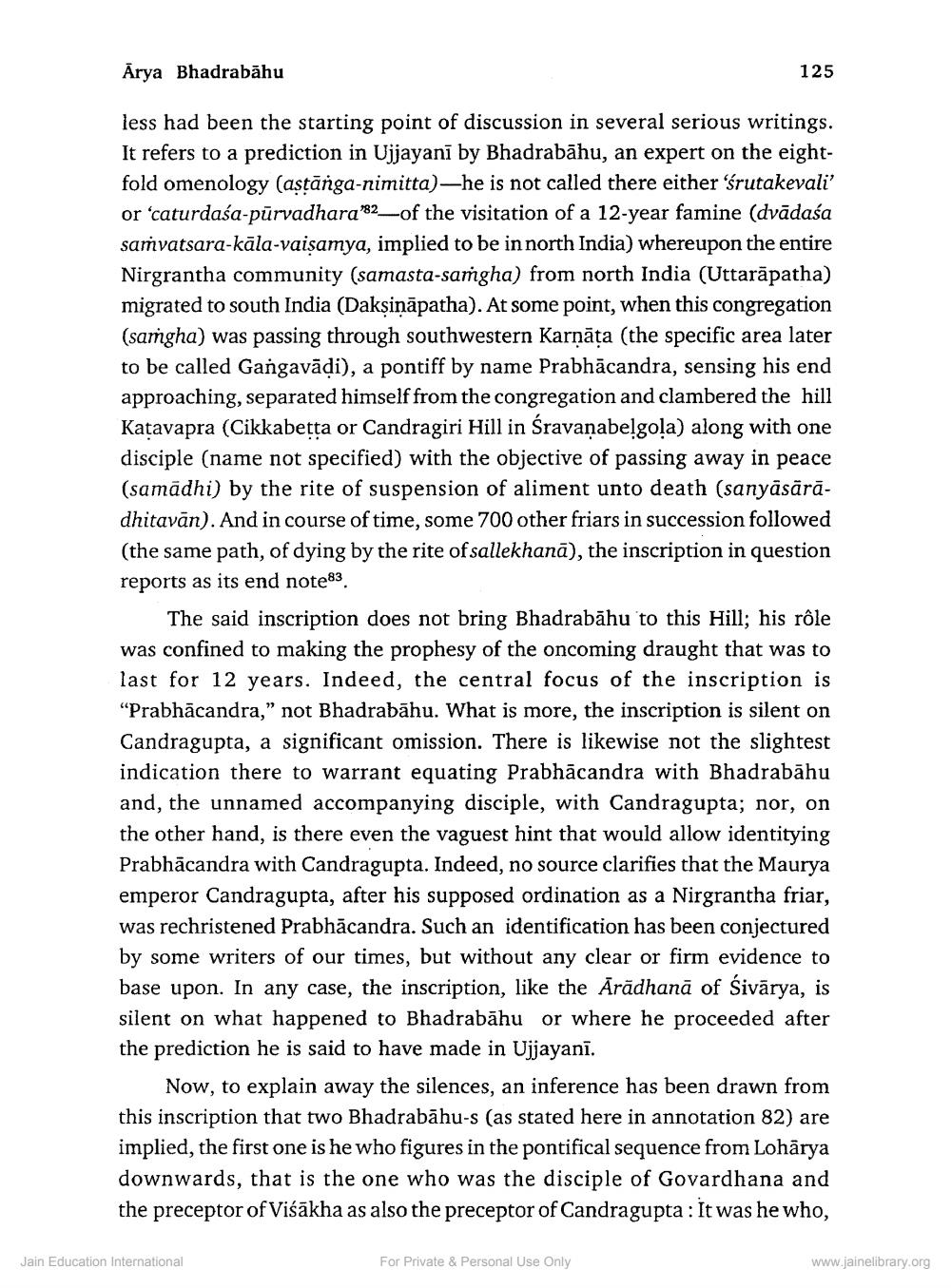________________
Arya Bhadrabāhu
125
less had been the starting point of discussion in several serious writings. It refers to a prediction in Ujjayanī by Bhadrabāhu, an expert on the eightfold omenology (astānga-nimitta)—he is not called there either 'śrutakevali' or 'caturdaśa-pūrvadhara 82—of the visitation of a 12-year famine (dvādaśa samvatsara-kāla-vaisamya, implied to be in north India) whereupon the entire Nirgrantha community (samasta-samgha) from north India (Uttarāpatha) migrated to south India (Daksināpatha). At some point, when this congregation (samgha) was passing through southwestern Karņāța (the specific area later to be called Gangavādi), a pontiff by name Prabhācandra, sensing his end approaching, separated himself from the congregation and clambered the hill Katavapra (Cikkabetta or Candragiri Hill in Śravanabelgola) along with one disciple (name not specified) with the objective of passing away in peace (samadhi) by the rite of suspension of aliment unto death (sanyāsārādhitavān). And in course of time, some 700 other friars in succession followed (the same path, of dying by the rite of sallekhanā), the inscription in question reports as its end note83.
The said inscription does not bring Bhadrabāhu to this Hill; his rôle was confined to making the prophesy of the oncoming draught that was to last for 12 years. Indeed, the central focus of the inscription is "Prabhācandra," not Bhadrabāhu. What is more, the inscription is silent on Candragupta, a significant omission. There is likewise not the slightest indication there to warrant equating Prabhācandra with Bhadrabāhu and, the unnamed accompanying disciple, with Candragupta; nor, on the other hand, is there even the vaguest hint that would allow identitying Prabhācandra with Candragupta. Indeed, no source clarifies that the Maurya emperor Candragupta, after his supposed ordination as a Nirgrantha friar, was rechristened Prabhācandra. Such an identification has been conjectured by some writers of our times, but without any clear or firm evidence to base upon. In any case, the inscription, like the Arādhanā of Sivārya, is silent on what happened to Bhadrabāhu or where he proceeded after the prediction he is said to have made in Ujjayanī.
Now, to explain away the silences, an inference has been drawn from this inscription that two Bhadrabāhu-s (as stated here in annotation 82) are implied, the first one is he who figures in the pontifical sequence from Lohārya downwards, that is the one who was the disciple of Govardhana and the preceptor of Viśākha as also the preceptor of Candragupta : It was he who,
Jain Education International
For Private & Personal Use Only
www.jainelibrary.org




